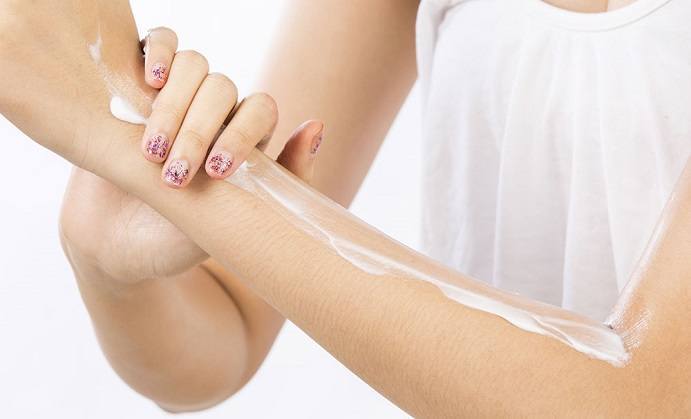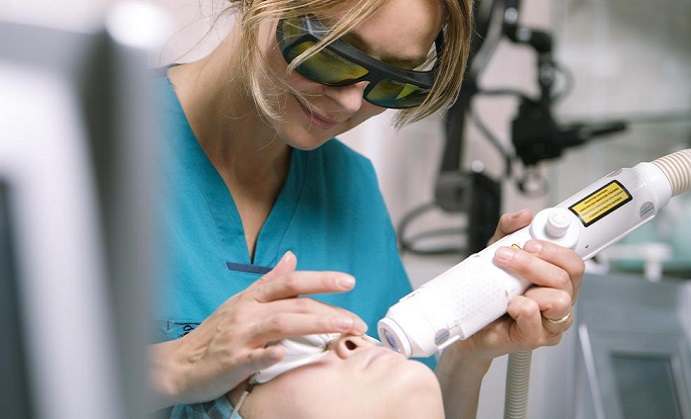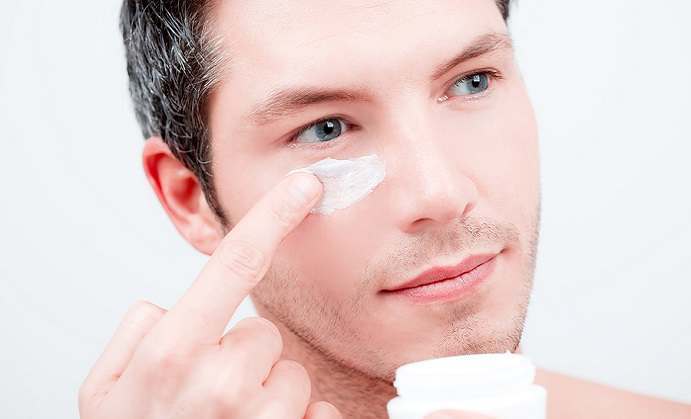Did you know that the average person has a little over 20 square feet of skin and that in their lifetime they will shed and replace their skin almost 1,000 times? The skin is our body’s largest and fastest growing organ, and it protects our internal organs, skeletal system, muscles and tissues from physical harm and the invasion of fungi, parasites, viruses and bacteria. This is why any wound that we receive is very important.
The Healing Process
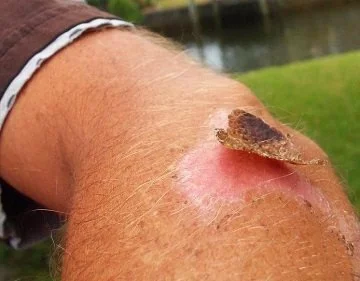 Our body realizes the danger of an open wound, so when we are hurt, it immediately springs into action to prevent excessive blood loss and the entrance of dirt and germs. First of all, the red blood cells begin to clump together forming a clot that stops bleeding. This clot eventually dries and becomes a scab that temporarily seals the wound. Beneath the scab, white blood cells are busy removing dirt and destroying any germs. A little later fibroblast cells enter the wound and begin producing collagen. Collagen is tough, white fibers that provide a foundation for the new tissue and skin that will fill in the wound. After the new tissue and skin has grown, the scab falls off and your skin is once again the barrier that it should be.
Our body realizes the danger of an open wound, so when we are hurt, it immediately springs into action to prevent excessive blood loss and the entrance of dirt and germs. First of all, the red blood cells begin to clump together forming a clot that stops bleeding. This clot eventually dries and becomes a scab that temporarily seals the wound. Beneath the scab, white blood cells are busy removing dirt and destroying any germs. A little later fibroblast cells enter the wound and begin producing collagen. Collagen is tough, white fibers that provide a foundation for the new tissue and skin that will fill in the wound. After the new tissue and skin has grown, the scab falls off and your skin is once again the barrier that it should be.
We can aid the healing process by applying pressure to slow bleeding, washing the wound with mild soap and water to remove any foreign matter, applying an antibacterial cream and by covering the wound with a clean dressing when necessary. Not picking the scab is another important way that we can help our bodies heal and prevent scars.
Scars Happen
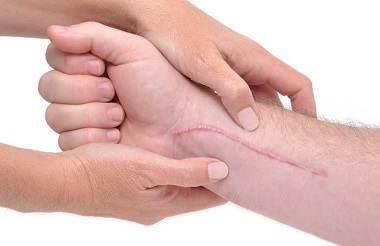 If the wound is only superficial, the tissue and skin will most likely close without leaving a scar, but in wounds that are deep or extensive the collagen builds up and leaves a lighter colored, fibrous scar. Every person scars differently. Genetics, age, certain diseases like diabetes and even some medications influence how often and how badly we scar. Optimum wound care can decrease the possibility of scarring, but it can’t prevent scarring all together.
If the wound is only superficial, the tissue and skin will most likely close without leaving a scar, but in wounds that are deep or extensive the collagen builds up and leaves a lighter colored, fibrous scar. Every person scars differently. Genetics, age, certain diseases like diabetes and even some medications influence how often and how badly we scar. Optimum wound care can decrease the possibility of scarring, but it can’t prevent scarring all together.
Hiding and Treating Small Scars
Acne, chickenpox and small injuries can leave behind superficial marks which fade with time or small scars. Both of these respond well to scar creams, which encourage healing by hydrating the area and providing essential oils and vitamins. Minor scars which persist after treatment with scar creams may fade with exfoliation. There are natural and also chemical exfoliants which can be applied at home to peel away the top most layer of skin cells. If you prefer a deeper exfoliation, a dermatologist or cosmetic surgeon can perform dermabrasion or microdermabrasion. Covering small scars with makeup is another option which may prove less costly and more practical than routine exfoliation.
Treating Major Scars
![]() Large wounds generally scar badly. There are also certain people who develop hypertrophic or keloid scars even if the wound is not severe. Their bodies simply produce too much collagen, which results in an extra large, raised scar. There are several treatments available to decrease the size or improve the appearance of these major scars. Silicone sheets and creams are good options to start with. The silicone adheres to the skin around the scar and seals in moisture. Overtime the scar softens, flattens and fades in color. More aggressive and also more costly forms of treatment are cortisone injections, laser treatments and surgical removal.
Large wounds generally scar badly. There are also certain people who develop hypertrophic or keloid scars even if the wound is not severe. Their bodies simply produce too much collagen, which results in an extra large, raised scar. There are several treatments available to decrease the size or improve the appearance of these major scars. Silicone sheets and creams are good options to start with. The silicone adheres to the skin around the scar and seals in moisture. Overtime the scar softens, flattens and fades in color. More aggressive and also more costly forms of treatment are cortisone injections, laser treatments and surgical removal.
If you are considering scar treatment, be sure and find a healthcare professional that can give you advice. Experienced professional advice will help you find the treatment that best meets your needs.
Do you want to find an effective Scar Repair treatment? Check out our top rated Scar Repair products


